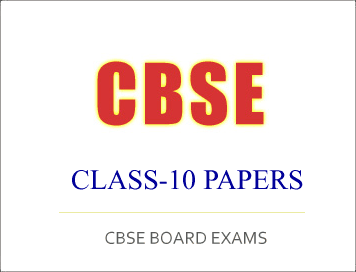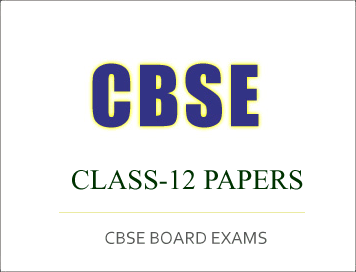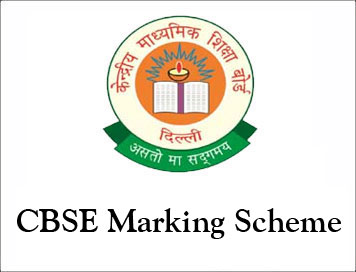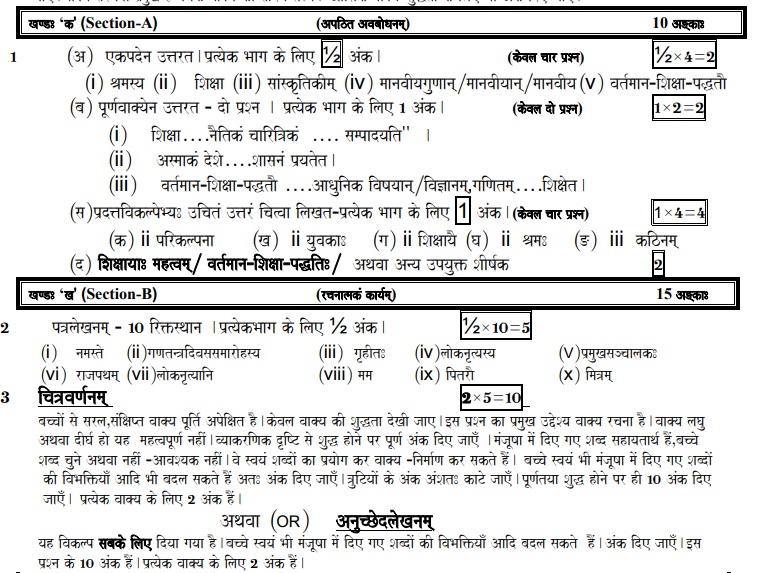CBSE PORTAL : CBSE Class-10 Exam 2019 : All India Scheme Question Paper-Automobile Technology | |
- CBSE Class-10 Exam 2019 : All India Scheme Question Paper-Automobile Technology
- CBSE Class-10 Exam 2019 : All India Scheme Question Paper-Dynamic of Retailing
- CBSE Class-10 Exam 2019 : All India Scheme Question Paper-Basic Agriculture
- CBSE Class-12 Exam 2019 : Marking Scheme, Economics
- CBSE Class-12 Exam 2019 : Marking Scheme, Computer Science
- CBSE Class-10 Exam 2019 : Marking Scheme, Sanskrit
- CBSE Class-10 Exam 2019 : Marking Scheme, Home Science
- (Download) CBSE: Class XII Troubleshooting And Maintenance Of Electronic Equipment Question Paper - 2019
- (Download) CBSE: Class XII Derivative Market Operations Question Paper - 2019
- (Download) CBSE: Class XII Operation And Maintenance of Communication Devices Question Paper - 2019
| CBSE Class-10 Exam 2019 : All India Scheme Question Paper-Automobile Technology Posted: 12 Jun 2019 05:48 AM PDT |
| CBSE Class-10 Exam 2019 : All India Scheme Question Paper-Dynamic of Retailing Posted: 12 Jun 2019 05:38 AM PDT |
| CBSE Class-10 Exam 2019 : All India Scheme Question Paper-Basic Agriculture Posted: 12 Jun 2019 05:30 AM PDT |
| CBSE Class-12 Exam 2019 : Marking Scheme, Economics Posted: 12 Jun 2019 04:16 AM PDT |
| CBSE Class-12 Exam 2019 : Marking Scheme, Computer Science Posted: 12 Jun 2019 04:09 AM PDT |
| CBSE Class-10 Exam 2019 : Marking Scheme, Sanskrit Posted: 12 Jun 2019 03:31 AM PDT
CBSE Class-10 Exam 2019 : Marking SchemeQuestion Paper SanskritCBSE Class-10 Exam 2019 : Sanskrit (Delhi)सीनियर स्कूल सर्टीफिकेट परीक्षा (Sanskrit) संस्कृत 122 Code 52
Click Here to DownloadCourtesy: CBSE |
| CBSE Class-10 Exam 2019 : Marking Scheme, Home Science Posted: 12 Jun 2019 03:25 AM PDT
CBSE Class-10 Exam 2019 : Marking SchemeQuestion Paper Home ScienceCBSE Class-10 Exam 2019 : Home ScienceSecondary School Examination (March- 2019) Home Science (064) Marking Scheme Code No.37 Q.1 Any Two:- Q.2. Any Two:- ½ x 2= 1 Q.3. A person who comes in direct contact with utensils/food while cooking, storing and packaging food. 1 Q.4. Any Two ½ x 2= 1 Click Here to DownloadCourtesy: CBSE |
| Posted: 11 Jun 2019 05:31 AM PDT
Question Papers For Board Examinations 2019Class – XIISubject – Troubleshooting And Maintenance Of Electronic EquipmentSubject : Troubleshooting And Maintenance Of Electronic Equipment Class : XII Year : 2019 General Instructions : (i) This question paper contains 31 questions out of which the candidate needs to attempt only 23 questions. SECTION A SECTION B Questions :SECTION AAttempt any ten questions. Each question carries 1 mark. 1. Occupational hazards mostly occur due to 2. Occupational health focuses on employee’s physical well-being, mental well-being and 3. A microphone that works on generator principle is 4. A music system is not generating low frequency range signals. The problem may be with Click Here To Download Full Paper<< Go Back To Main PageCourtesy: CBSE |
| (Download) CBSE: Class XII Derivative Market Operations Question Paper - 2019 Posted: 11 Jun 2019 05:27 AM PDT
Question Papers For Board Examinations 2019Class – XIISubject – Derivative Market OperationsSubject : Derivative Market Operations Class : XII Year : 2019 General Instructions : (i) This question paper contains 33 questions out of which the candidate needs to attempt only 25 questions. SECTION A
SECTION B
(iii) All questions of a particular section must be placed in the correct order Questions :SECTION AAttempt any 10 questions. Each question is of 1 mark. 1. Name any two popular international stock exchanges that trade in derivatives. 2. Why is Swap considered as forward contract ? 3. List any two macro economic factors that affect the index movement. 4. What is meant by a Good Index ? 5. A bought ABC stock 1000 @ <100. How will he make complete hedging if Beta of stock is 1·2 ? 6. What is meant by partial hedging ? 7. Name the participant who buys future instead of spot contract in a bullish condition. 8. Which option strike leads to negative cash flow ? 9. B bought < 140 call option at premium < 20. Spot trades at < 145 on expiry. Find the time value of the option. 10.What is the maximum price of put option ? 11.What is meant by trigger price ? 12.Who is the approved user of the F&O segment ? Click Here To Download Full Paper<< Go Back To Main PageCourtesy: CBSE |
| (Download) CBSE: Class XII Operation And Maintenance of Communication Devices Question Paper - 2019 Posted: 11 Jun 2019 05:11 AM PDT
Question Papers For Board Examinations 2019Class – XIISubject – Operation And Maintenance of Communication DevicesSubject : Operation And Maintenance of Communication Devices Class : XII Year : 2019 General Instructions : (i) This question paper contains 31 questions out of which the candidate needs to attempt only 23 questions. SECTION A
SECTION B
Questions :SECTION AAttempt any ten questions. Each question carries 1 mark. 1. Modulating frequency is 2. In free space, the speed of electromagnetic waves is 3. VHF signals propagate through 4. In a cellular mobile system, the shape of the cells is 5. A geostationary satellite takes one round of its orbit in 6. The source of electrical power in a satellite system is 7. In mobile communication, we use 1G, 2G, 3G and 4G. Here G represents 8. Which of the following is not a mobile phone component ? 9. Bluetooth technology is used in communication for
Click Here To Download Full Paper<< Go Back To Main PageCourtesy: CBSE |
| You are subscribed to email updates from CBSE PORTAL : CBSE, ICSE, NIOS, JEE-MAIN, AIPMT Students Community. To stop receiving these emails, you may unsubscribe now. | Email delivery powered by Google |
| Google, 1600 Amphitheatre Parkway, Mountain View, CA 94043, United States | |





No comments:
Post a Comment